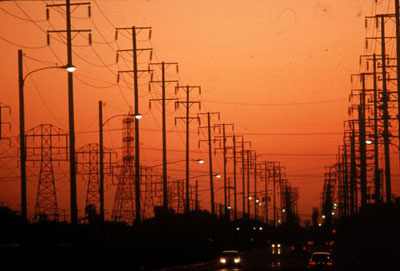 On a late Thursday afternoon in the summer of 2003, everything turned off. As this week’s Retro Report video illustrates, in the span of a few minutes, the biggest power outage in United States history brought swaths of the Northeast, the Midwest and Canada to a standstill. Around 50 million people were left without power. In the days and weeks that followed, reporters and investigators raced to pinpoint the source of the outage, while larger questions swirled about the stability of the power grid in the 21st century. Here, a Times reporter who covers energy technology reflects on that day and the changes that resulted.
On a late Thursday afternoon in the summer of 2003, everything turned off. As this week’s Retro Report video illustrates, in the span of a few minutes, the biggest power outage in United States history brought swaths of the Northeast, the Midwest and Canada to a standstill. Around 50 million people were left without power. In the days and weeks that followed, reporters and investigators raced to pinpoint the source of the outage, while larger questions swirled about the stability of the power grid in the 21st century. Here, a Times reporter who covers energy technology reflects on that day and the changes that resulted.
When the lights went out for 50 million people on Aug. 14, 2003, most of them knew only that they themselves had lost electricity, not that a tightly knit system had been ripped apart all the way from Detroit to Toronto to New York City. Even the people in electric control centers were confused; some of those in the Midwest knew the magnitude of the problem only because they were watching CNN, which showed a blacked-out Times Square.
I had been at the Indian Point nuclear plant that morning to report an article about handling nuclear waste. By 4 P.M. I was in southern Westchester in my parents’ kitchen, unplugging the telephone so I could connect it to my laptop modem and file to The Times. As I connected the phone line to the modem, the lights went out.
“Matthew, what have you done?” my mother asked. In daylight, it’s hard to tell that the whole neighborhood has been switched off, but a battery-powered radio tuned to an AM station (then popular — it was still 2003) confirmed that New York City was also dark.
I was soon kicking myself for having left the nuclear plant, where I might have witnessed the complicated series of responses that must be taken in a blackout to avoid a meltdown (as would be demonstrated eight years later in Fukushima, Japan).
Even when the extent of the blackout was clear, the origin was not. In those days, determining the sequence took weeks of tedious forensic work by engineers, who gathered data from recorders at hundreds of locations, and then synchronized them to establish the chronology of what was cause and what was effect. Today more of that data is available in real time.
The engineers determined that the immediate source of the problem was a cluster of lines that had failed in Ohio, unnoticed by local operators, causing electricity to surge into lines that were still open, until those overloaded and led to a cascade.
It was less than two years after the attacks of Sept. 11, 2001, and terrorism was on everyone’s mind. For many people, so was New York’s fate in the last big blackout, in July 1977, when rioters had looted and burned hundreds of shops and stores. Some remembered November 1965, when a blackout hit most of the Northeast, and the instant suspicion was a Soviet attack. But it was the spirit of Sept. 11 that prevailed, with remarkable cooperation and patience.
The grid, especially in those days, was opaque even to its operators, and problems became apparent with far too little warning for anything to be done about it. Automatic relays (basically industrial-scale circuit breakers) were programmed to protect equipment, not to ride out any disturbance, and as each one acted, isolating a power line or a transformer, the disturbance got bigger and bigger, until a huge house of cards collapsed. Later investigation showed that some utilities did not realize how prone their relays were to unplugging key components of the system.
But the investigation also showed that there was nothing high tech about the causes. One power company, FirstEnergy, had neglected to trim trees near its high voltage lines, and on hot days, when power demand is high, the metal in those lines gets longer and the lines sag; in this case, three of them hit the trees, creating short circuits that took the lines out of service. The regional grid coordinator, the Midwest Independent System Operator, was supposed to have a computer program in place to monitor power flows. A technician had shut it off to upgrade the software, and then gone to lunch without turning it back on, or telling the operators what he had done. The operators themselves were not properly trained.
Neglect and error cause all kinds of problems in industrial operations, but the grid is a bit different, finely balanced and tightly linked, and one bad actor became something like a drunken sailor in a canoe.
Before the blackout, Congress had dithered for years about whether to institute mandatory performance standards for companies on the grid. The blackout settled the question, although the details were far too complicated for the government itself to put into effect. The Energy Department hired a pre-existing voluntary organization, which became the North American Electric Reliability Corporation, to develop consensus standards and then enforce them.
Utilities that had previously checked boxes on forms indicating that they were complying with recommended standards were now audited to see if they were meeting mandatory rules.
SOURCE : www.nytimes.com



Thanks for finally writing about >The Blackout That Exposed the Flaws in the Grid-(VIDEO) <Liked it!